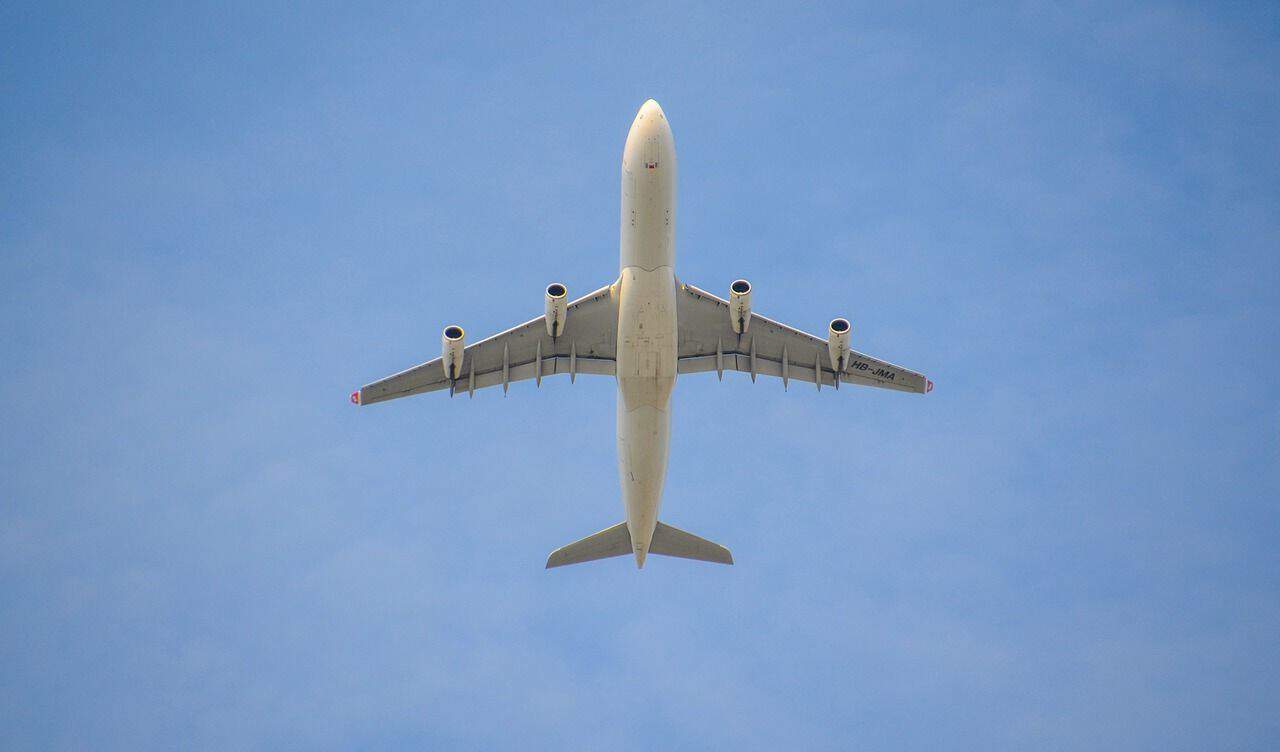Now let’s talk about the second of the 2 types of Points in the world of Travel Hacking, Variable Value Points. Here are many more details, because they are by far the most complex.
This is part 3 of 4 articles on how points work. Read the first part for the introduction and the basics of Points, because I will not repeat everything here.
Let’s just remind you of the 2 types of Points/Miles for free travel:
- Fixed value points (so a flight / hotel costs a variable number of Points)
- Variable value points (so a flight / hotel costs a fixed number of Points)
The first type is very simple. This is explained in detail in the article on Fixed Value Points, but basically you will always have the same value for your Points.
Here are the detailed explanations on the second type, Variable Value Points. Don’t forget to tell us what our next Travel Hacking articles should be about in the comments!
Variable Value Point Basics
The basic concept is that you use the Points according to award charts and rules pre-determined by each program, which make some uses give you much more for your money. Others less so. Hence the variable value.
Since the value of Points is not fixed, what is fixed is the number of Points required for specific flights or hotels, regardless of their cash price. So you should see clearly that this is the complete opposite of Fixed Value Points.
Variable Value Points are a type of Points that, since their value can vary greatly, allows you to extract much more value… but only if you understand them and use them well. Because the same number of these Points can give you for $200 worth of free travel… or $1,000 worth in certain circumstances when you maximize them.
But it is especially those who travel a lot and those who have less flexibility to find cheaper cash prices that will be able to maximize them (but not only). In short, these Points are much more complicated to understand, and even more difficult to use.
Because you need more flexibility (flexibility is always the key, it’s the same with points as with cash tickets). Not to mention taking the time to understand the programs (we will help you, we promise).
This is another reason it is more complex: all the different Points programs have different rules. But fortunately, the basics are quite similar, so let’s go with the general rules and illustrate with examples.
How to use variable value points
As mentioned, the price of flights and hotels (in number of Points/Miles) is fixed, according to the pre-determined award chart of each program. That’s why it’s called variable value: no matter what the cash price is (so no matter the value of the flight or hotel), the number of Points or Miles required doesn’t change. So the number of points required for a flight or hotel will be fixed, depending on the program charter (the redemption charts vary by program, as mentioned).
This is how you can get very good redemptions: the key is to use a minimum number of Points in exchange for the flights / hotels that are worth the most money. This is how you can get a lot of value for your money (or for your Points in this case).
With award charts, there are so-called “sweet spots”, special uses that give you a better return, for many reasons. As the value of the Points is variable, this is where you should use your Points.
In short, the amount you save with these Points always varies, which is why they are Variable Value Points. Please note that taxes are never included with Variable Value Points (for flights), but there is also an extra level of complexity that I explain in a detailed paragraph on how to lower the cash portion.
To use the same example with the 25,000 AMEX Points the AMEX Gold Card gives you, for the same number of Points you could have airline tickets worth $1,000 instead of $250 in airline tickets by using the Points as fixed value Points. It’s quite complex to maximize, but the potential return is much higher.
But as mentioned, you have to know how to use them well, because it is also very feasible (and easy) to get less value for your money with Variable Value Points than with Fixed Value Points, if you use them incorrectly. Hence the complexity.
In short, this subject amply deserves its own article, because, surprise: it is complex (recurring theme in travel hacking).
There will soon be a detailed article on Aeroplan specifically, as it is still the inevitable program in Canada, but you can already read much more details in our article on how to use airline miles.
What are the types of Variable Value Points
The first part is the airline side. Variable Value Points are essentially the Points programs of traditional airlines: Aeroplan (Air Canada), Avios (British Airways), AAdvantage (American), Asia Miles (Cathay Pacific), Etihad Guest (Etihad), etc.
What we need to know is that these programs are all very different and, above all, that they have different partners. Aeroplan Miles do not only allow you to travel with Air Canada (in fact you should avoid it as much as possible, I’ll get back to that in a second) but rather with all the airlines of Star Alliance, the airline alliance that Air Canada belongs to. The same goes for Avios Points, they can be used on all partners of the Oneworld airline alliance.
The second part is the award charts of the banking institutions. If you have read the article on Fixed Value Points, you know that bank Points are fixed value, but they are sometimes hybrid, i.e. they can also be used as Variable Value Points. RBC, CIBC and AMEX banks, for example, have their own variable value award flight charts, which operate somewhat differently from those of airlines (but the basic principle remains the same). I will get back to this with an article specific to bank fixed-point award chart.
Finally, the third type of variable value point is hotels. Let’s forget about these for a second and focus on the variable value points used for flights, the last paragraph will focus on hotels.
Good use of Variable Value Points
We have a detailed article on how to maximize Points, where we list the general rules that explain when it’s a good time to use Points for maximum value. Basically, if your flight is expensive (cash price) or if you don’t have the flexibility to find cheap flights, that’s the time to make good use of your points.
Taxes and surcharges
This is somewhat related to the previous point, namely good uses. As you know, in Canada, taxes on airfares are among the highest in the world. These costs are not covered by Variable Value Points, so that’s why it’s very easy to misuse the variable value Points and get less for your money than with Fixed Value Points (which cover the full amount, including taxes, because it’s just a travel credit).
But it’s not just about taxes, and that’s why I was telling you earlier to avoid Air Canada as much as possible. There are also so-called “carrier surcharges” on some airlines, which you must always pay in cash with the taxes. Air Canada charges insane amounts of surcharges when you use Aeroplan Miles for flights on Air Canada, but they do not take charge these if you take Aeroplan Miles on United Airlines, its partner in Star Alliance (and many other partners).
For example, a flight to California (or anywhere in North America) on Aeroplan will cost you 25,000 Miles roundtrip and $200-250 in taxes and surcharges from Montreal. If you leave from Plattsburgh (less than 1 hour from Montreal), the same flight will cost you the same 25,000 Miles but only $14 in taxes (I’ll explain this trick to you in a detailed article). Another example is flying to Europe: taxes/surcharges are over $500 on Air Canada… but on Swiss, you’ll pay under $200. With the exact same amount of Aeroplan Miles.
In short, you have to take into account taxes and surcharges and choose the right partners, I’ll explain in detail in the article on Aeroplan.
These surcharges represent large amounts of money, so you must try to avoid them. For Aeroplan, for example, partners that do not have surcharges are United, Turkish, SAS, Swiss, Brussels, Copa, Air New Zealand, EVA Air, Singapore, Air China, Air India, Ethiopian and EgyptAir.
Avoiding surcharges will not change the high taxes in Canada (if you can, leaving from a US border airport is often worth it financially if there are two of you travelling) but it will still reduce the cash cost significantly. More details in the article on Aeroplan.
Hotel points
As for the hotel programs’ variable value points, it is very similar. The difference is that the reward charts are based on hotel categories, instead of by region or distance for flights. Hotels that are more expensive in cash, that are well-located in prime spots, that are in expensive markets or that are more luxurious… will be in a higher category and cost more Points (but will still cost a fixed number of points for a variable value, regardless of the cash price).
The lower categories cost a lower amount of Points per night (for example 7,500 a night for Marriott), while the higher categories cost a higher amount of Points per night (60,000 a night). For hotels, free nights are completely free, Points also cover taxes by default unlike with flights. A few specific hotels will charge you a resort or destination fee nightly, but that is very very very rare.
I will write a detailed article about the different Hotel programs, but please note that in Canada, our options are more limited. The most interesting program (by far) is Marriott Rewards.
You can read our detailed article on how Hotel Points work, it will give you an overview before the detailed article on Marriott.
Summary
This is the introduction to Variable Value Points. They are much more complicated to use, but have the potential to give you much more free travel for your money (or rather for your points). Do you have any questions? Ask them in the comments.
Want to see our current discounted plane tickets?
Click here to see our flight deals
Want more travel tips and inspiration?
Click here to see the blog homepage
You’ll probably enjoy this article:
How Ultra Low-Cost Carriers Work
Help us spread the word about our flight deals and travel tips by sharing this article and most importantly bookmark Flytrippers so we can help you navigate the world of low-cost travel!
Advertiser Disclosure: Flytrippers receives a commission on links featured in this blog post. We appreciate if you use them, especially given it never costs you anything more to do so, and we thank you for supporting the site and making it possible for us to keep finding the best travel deals and content for you. In the interest of transparency, know that we will NEVER recommend a product or service we do not believe in or that we do not use ourselves, as our reputation and credibility is worth far more than any commission. This principle is an essential and non-negotiable part of all our partnerships: we will never give any third-party any control whatsoever on our content. For more information on our advertiser disclosure, click here.
Travel Hacking Disclaimer: Flytrippers does not give financial advice. You should ensure travel hacking fits your personal situation and obtain professional advice if you so desire. Flytrippers may receive a commission for referrals, however our policy is to only recommend products or services we really believe in (and have ourselves). To read more on our disclaimer, click here.




